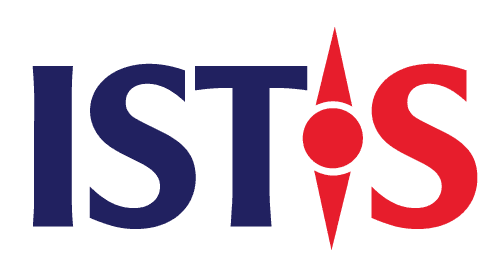The New Battleground is Digital
In an era where economies are increasingly data-driven and operations rely heavily on digital infrastructure, network security has evolved from a technical necessity to a cornerstone of national resilience and enterprise survival. From safeguarding intellectual property to defending against nation-state cyberattacks, network security services are are strategic imperatives.
Rising Threats in a Borderless Digital Age
Cyberattacks have become more sophisticated, more targeted, and more damaging. The proliferation of ransomware, zero-day vulnerabilities, and state-sponsored cyber espionage has turned the digital landscape into a high-stakes battlefield. As organizations digitize their services and adopt hybrid working models, the attack surface expands dramatically.
Recent high-profile breaches — including attacks on supply chains, critical infrastructure, and even democratic institutions — underscore a hard truth: no organization is immune.
What Network Security Services Encompass Today
Modern network security is no longer limited to firewalls and antivirus software. It spans a layered approach:
- Intrusion Detection and Prevention Systems (IDPS): Monitors network traffic for malicious activity and blocks threats in real time.
- Endpoint Detection and Response (EDR): Provides continuous monitoring and response capabilities on end-user devices like laptops and phones.
- Zero Trust Architecture: A security model that assumes no user or device is trusted by default, enforcing strict verification at every access point.
- Security Information and Event Management (SIEM): Collects and analyzes security data from across the network to detect threats and support compliance.
- Managed Detection and Response (MDR): Outsourced cybersecurity service that combines advanced threat detection with expert-led incident response.
- Cloud Security Posture Management (CSPM): Automatically identifies and fixes cloud misconfigurations to reduce security risks in cloud environments.
- Threat Intelligence and Analysis: Gathers, analyzes, and applies data about current and emerging cyber threats to improve security defenses.
These services work in concert to identify, isolate, and neutralize threats before they disrupt systems — all while ensuring compliance with regulatory frameworks such as:
- GDPR (General Data Protection Regulation): A European Union regulation that governs how personal data of EU citizens is collected, stored, and processed. It emphasizes user consent, data transparency, and the right to be forgotten.
- HIPAA (Health Insurance Portability and Accountability Act): A U.S. law that sets strict standards for protecting sensitive patient health information, particularly in digital systems used by healthcare providers and insurers.
- ISO/IEC 27001: An international standard for information security management systems (ISMS), providing a framework to systematically manage and protect sensitive company and customer data.)
Cloud Migration and Its Security Implications
The shift toward cloud computing has added both flexibility and complexity. Multi-cloud and hybrid environments require new paradigms for network visibility and control. Network security service providers now play a critical role in helping businesses navigate these waters, offering tools like Secure Access Service Edge (SASE), Identity and Access Management (IAM), and cloud-native threat monitoring.
Organizations are increasingly outsourcing their cybersecurity to MSSPs (Managed Security Service Providers) that offer round-the-clock surveillance, leveraging AI and automation to detect anomalies in real time.
The Human Factor in Cyber Defense
While technology is essential, people remain both the weakest link and the greatest asset in cybersecurity. Phishing remains one of the most effective forms of attack — not because of technical failure, but human error.
Thus, a growing part of network security involves training, awareness campaigns, and simulations that build a cyber-aware culture. Many network security services now bundle educational modules, phishing drills, and compliance training to address this human element.
Economic Impact: Cybersecurity as an Investment, Not a Cost
According to Cybersecurity Ventures, global cybercrime costs are expected to reach $10.5 trillion annually by 2025. In contrast, the global cybersecurity market is projected to surpass $266 billion by 2027. This gap illustrates both the growing threat and the rising demand for capable security services.
Enterprises and governments increasingly recognize that spending on network security services is an investment in operational continuity, public trust, and competitive advantage.
Strategic Role of Governments and National Security
Governments around the world are elevating cybersecurity as a matter of national policy. Initiatives such as the EU’s NIS2 Directive or the U.S. Executive Order on Improving the Nation’s Cybersecurity demand stricter controls and faster breach response.
In Southeast Asia, countries like Vietnam are strengthening public-private collaboration in cybersecurity. By integrating network security services into national digital transformation strategies, they aim to create safer environments for innovation and economic development.
The Role of AI and Machine Learning
Artificial Intelligence is revolutionizing threat detection. ML models can now detect behavioral anomalies, flagging activity that might indicate a breach even before it’s formally identified. These AI-driven services are a core component of next-generation security offerings.
However, the rise of AI in security also leads to an arms race. Attackers are using AI to find vulnerabilities faster, generate phishing content, and even deploy adaptive malware. The future of network security will be defined by how well defenders can stay ahead in this algorithmic battle.
Industry Case Studies: What Leaders Are Doing Right
1. Financial Sector:
Major banks are now deploying zero-trust network access and real-time fraud detection. Services from providers like Palo Alto Networks and CrowdStrike are becoming staples for financial institutions that handle large-scale transactions and sensitive customer data.
2. Healthcare:
Hospitals and research institutions are particularly vulnerable, as seen during the COVID-19 pandemic. The deployment of encrypted communications and EDR tools has helped mitigate threats while ensuring HIPAA compliance.
3. Manufacturing and Supply Chain:
The rise of smart factories and IoT integration makes manufacturers a prime target. Network segmentation and anomaly-based intrusion detection are helping secure the industrial internet.
Trends to Watch in the Next 5 Years
- Zero Trust becomes the norm
- 5G and IoT create new challenges
- Cyber insurance drives compliance incentives
- Quantum computing reshapes encryption
- Decentralized Identity gains traction
- Greater integration between physical and cybersecurity systems
Choosing the Right Network Security Partner
Not all service providers are created equal. When selecting a network security services partner, organizations should consider:
- Proven track record and industry certifications
- Capability in managing multi-cloud environments
- Real-time threat intelligence capacity
- Transparent reporting and audit trails
- Cultural fit and communication style
- Long-term partnerships built on trust and clarity tend to yield better resilience than ad-hoc or price-driven engagements.
Security as the Backbone of Digital Confidence
The future will only grow more digital, more connected, and unfortunately, more vulnerable. Network security services are no longer a back-office function — they are a business enabler, a strategic asset, and in many cases, a national priority.
Organizations that invest wisely and proactively in cybersecurity are not only protecting their assets — they are earning the confidence of their customers, partners, and stakeholders in an increasingly uncertain world.







